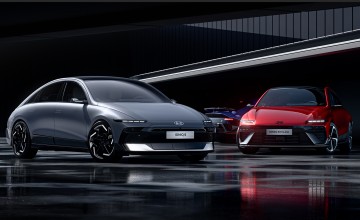IT seems like only yesterday that Hyundai unveiled its first ever 'hot hatch' - the i30 N - but it was nearly seven years ago.
The great thing is, it remains one of the best you can buy.
That's not surprising as bosses at Hyundai Europe were determined to develop from the ground up a car to deliver maximum driving pleasure on the road, as well as on the track.
The i30 N - or ‘corner rascal' according to Albert Biermann, executive vice-president of Hyundai's high performance vehicle decision - came with front-wheel drive and a short-throw six-speed manual transmission with rev-matching.
It was powered by a 2.0-litre turbocharged petrol engine available with two power outputs - 247bhp or 272bhp.
Both delivered maximum torque of 353Nm and a top speed of 155mph. Biermann, formerly vice-president engineering of BMW's M division, said: "The Hyundai i30 N has been developed for no other purpose than to deliver maximum driving fun to our customers in an accessible high-performance package."
And it lived up to that claim. Then, an update in 2021, made it even better.
At the front, a new wider centre grille was optimised to allow efficient engine cooling and a redesigned front that significantly improved airflow and reduced turbulence into the wheel housing.
A 'Fastback' version also came along.
Now the i30 N - the N logo symbolises a chicane - features 19-inch forged alloy wheels, which are 14.4kg lighter than the previous cast alloy wheels.
The five-double-spoke wheels are finished with a dark satin grey matte finish, contrasting with the N-specific red brake callipers with N logo.
The tyres are specially-developed ultra-sticky Pirelli P-Zero tyres, and there's also a physic-defying Electronic Slip Differential to extract maximum grip when cornering.
The interior features a larger 10.25-inch navigation system, with multi speaker sound, voice control and the latest version of Bluelink, Hyundai's connected car service.
The screen is also used to display the Performance Driving Data System, which monitors and helps to improve the driver's track skills, with updated graphics for even more ease of use. This feature saves and displays driving data, including information on bhp, torque, turbo boost and also includes a lap and acceleration timer.
There's also rear privacy glass, heated electric front seats, heated front seats, front and rear parking sensors, cruise control, rear-view camera, wireless smartphone charging, and lane-keep assist.
The i30 N interior is focused on connecting the driver with the car, with features such as its analogue instrument cluster with its active variable LED red zone and the shift timing indicator. Metal pedals and Performance Blue stitching are joined by new seatbelts with Performance Blue accents.
Power was increased to 276bhp and stonking 392Nm of torque. Maximum torque is available between 1,950 and 4,600rpm, with a 0-62 time - using launch control - of 5.4 seconds.
The six-speed manual transmission was carried over from the previous model, while an eight-speed dual clutch transmission - the N DCT.
A wet type transmission, oil is used to cool the clutch components, creating less friction and allowing a higher amount of torque to be transferred through the gearbox.
While purists might turn up their noses at such a thing, I felt it meant I could get more enjoyment out of the five-door i30 N. It didn't tame it, just made it more biddable.
It also enables a range of high-performance driving features designed to enhance the driving experience - N Grin Shift (NGS), N Power Shift (NPS) and N Track Sense Shift.
NGS gives the driver the ability to manually select maximum power from the engine and transmission for 20 seconds. When activated, you grin. It's that simple.
NPS automatically engages when the car accelerates with more than 90% of throttle and works to mitigate any reduction in torque by using the wet DCT clutch plates to maintain engine revolutions during upshifts and deliver maximum power and acceleration to the wheels.
NTS automatically recognises driving style by monitoring sensors covering steering, brakingand throttle systems.
If it detects a sporty driving style, gear shift logic is adjusted to maximise N DCT performance, with upshifts held for longer and downshifts timed to maintain maximum power when the throttle is re-applied.Clever.
It is a proper hot hatch, with an exhilarating exhaust note and three adjustable damper settings, though the third is best-saved for the track. It goes where you point it helped by the clever differential delivering masses of front-end traction.
Body control is excellent with minimal roll. It's a car you can push to the limit - yet remain benign around town or on the motorway.
The i30 N is also as everyday practical as its lesser-powered siblings.
It's spacious up front with lots of movement in the seating position and a steering wheel with reach and rake adjustment. The rear should be fine for all except the tallest of adults.
There's also a usable 381-litre boot, which can be expanded to 1,287 litres.
Hyundai says the auto i30 N will return up to 33.6mpg though fuel economy is never top of the list when considering a hot hatch.
However, when it comes to safety, it is one of the best in its class. The standard i30 received a five-star Euro NCAP crash test rating and an 88 per cent score for adult occupant protection. Autonomous emergency braking, front collision warning, driver attention warning, high beam assist and lane keep assist are all standard on the i30N.


.jpg)












